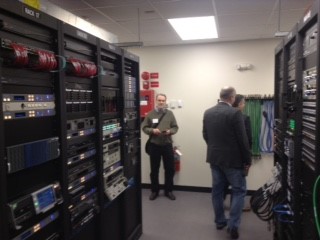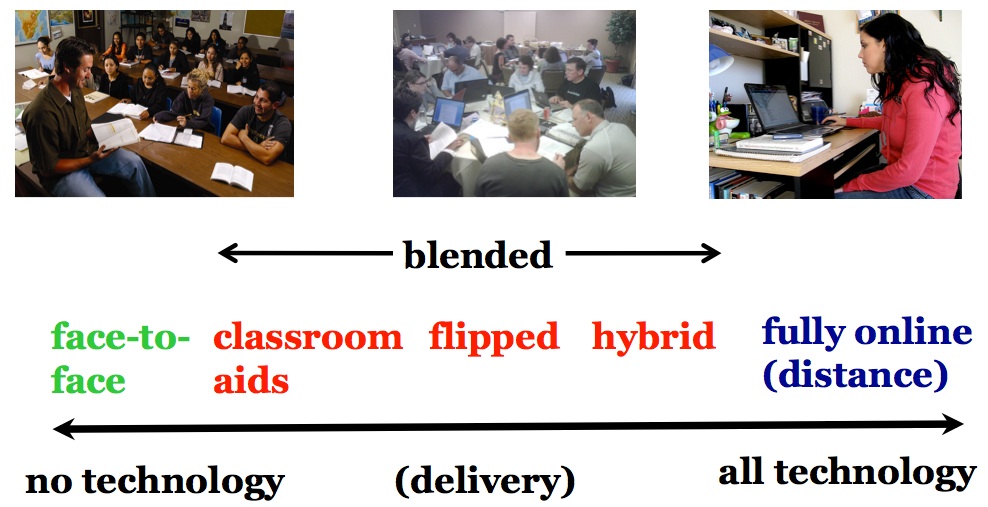Based on the literature regarding games, gaming, gamification, game-based learning, and serious games, several clear trends emerge:
- Gaming and gamification in the sense of game-based learning is about using games and game-like tactics in the education process, for greater engagement and better learning outcomes. However, this is only the first level of such initiative. The second and higher level is about involving students in the game-building and gamification of the learning process (as per Vygotsky’s Zone of…) thus achieving student-centered and experiential learning.
- When hosting games and gaming in any library, “in-person” or electronic/online games are welcome but not sufficient to fulfill their promise, especially in an academic library. Per (1), an academic library has the responsibility to involve students and guide them in learning how to engage in the building process required in true game-based learning.
- Game-based learning, gaming and gamification in particular, in educational (academic library) settings must consider mobile devices and the BYOD movement in particular as intrinsic parts of the entire process. Approaching the initiative primarily by acquiring online “in-person” games, or game consoles has the same limited educational potential as only hosting games, rather than elevating the students to full guided engagement with game-based learning. If public relations and raised profile are the main goals for the academic library, such an approach is justified. If the academic library seeks to maximize the value of game-based learning, then the library must consider: a. gaming consoles, b. mobile devices as part of a BYOD initiative and c. cloud-based / social games, such as MineCraft, SimCity etc.
- Design for game-based learning, gaming and gamification in educational (academic library) settings must include multiple forms of assessment and reward, e.g. badges, leaderboards and/or certificates as an intrinsic part of the entire process. Merely hosting games in the academic library cannot guarantee true game-based learning. The academic library, as the forefront of a game-based learning initiative on campus, must work with faculty on understanding and fine tuning badges and similar new forms of assessment and reward, as they effectively implement large scale game-based learning, focused on the students’ learning gains.
Recommendations for LRS
- In regard to LRS, the gaming and gamification process must be organized and led by faculty, including housing and distributing the hardware, software and applications, when needed.
- The attached paper and the respective conclusions summarized in four points demand educational and experiential background, which is above the limits of the LRS staff. In addition, the LRS staff has clearly admitted that the pedagogical value of gaming and gamification is beyond their interest. This recommendation is not contradicting to the fact and opportunity for LRS staff to participate in the process and contribute to the process; it just negates the possibility of staff mandating and leading the process, since it will keep the gaming and gamification process on a very rudimentary level.
- The process must be further led by faculty with a terminal degree in education (Ph.D.) and experience in the educational field, since, as proved by the attached paper and 4 point conclusion, the goal is not a public-library type of hosting activities, but rather involving students in a pedagogically-sound creative process, with the respective opportunity for assessment and future collaboration with instructors across campus. This recommendation is not contradicting the fact and opportunity for LRS library faculty to participate actively in the process and contribute to the process. It just safeguards from restricting the process to the realm of “public-library” type of hosting activities, but failing to elevate them to the needs of an academic campus and connecting with instructors across campus.
- This conclusions adhere to and are derived from the document recommended by the LRS dean, discussed and accepted by LRS faculty in 2013 about new trends and directions in academic libraries, namely diversification of LRS faculty; breaking from the traditional library mold of including faculty from different disciplines with different opinions and ideas.
reorganization done the old fashion way and reorganization done differently
so,
Pls have a link to the PDF file
edutopia-dl-finley-53-ways-to-check-understanding
Here some opinions from the comments section:
Formative assessments are only good if you use them to alter your teaching or for students to adjust their learning. Too often, I’ve seen exit tickets used and nothing is done with the results.
Please consider other IMS blog postings on assessment
https://blog.stcloudstate.edu/ims/?s=assessment
Midwest AV Summit

Matthew Clay : Active Learning Spaces
partners across campus for IT/AV: CETL
What is the most important key for creating active learning spaces (ALS).
Mathew shared his work with CETL and his understanding of the importance of faculty being brought to the table. Faculty as equal stakeholder in the process.
In a conversation with him after the presentation, he agreed that faculty must be the leading force in in generating ideas what new technology and how to implement technology in the classroom. He agreed that at the present IT/AV staff is the leading force and this is a corrupt statuquo
key partnerships:
faculty and academic affairs, students, facilities, architects, engineers, contractors, furniture vendors, IT (networking, support instructional design)
challanges: ITS mindset (conservative), Administration must be on board (money), Funding.
MnSCU is not Google friendly. 60% of the staff is not doing the same tasks as 3 years ago.
Open about challenges, sharing more with faculty. Nice to hear this, but the communication must be much larger, to the point when faculty are equal partners in a relationship, which is not far from equal decision making.
If faculty is not considered a REAL stakeholder (versus intimated body in a meeting which is controlled by IT people), the entire technology use goes down the drain. Faculty is much stronger relationship with students then IT is with students. The presentation put weight on IT staff and its connection with students’ needs. It is questionable how IT staff can make stronger connection then faculty, who are in a daily contact with students.
The issue is how to assist faculty to catch up with the technology, not how IT staff to rival faculty in their connection with students. What faculty lacks in understanding of technology cannot be replaced by IT staff increasing interaction with students, but rather assisting faculty with coming to terms with technology.
maintaining innovation: fail fast and fail forward; keep up to date with technology (blank statement); always look for new furniture; focus on space design instead of just A/V; Challenge yourself with new ideas; always learn from your mistakes; always get feedback from students and faculty (again, the PERIPHERAL role of faculty. Is feedback all expected from faculty? It faculty and IT staff must be equal partners at the decision table. not faculty being consulted at decision made by IT staff)
Google Glass mentioned, Pebble watches. supposedly to understand students habits. Big data used to profiling students is very fashionable, but is it the egg in the basket?
they have 3d printer, Inoculus. Makerspace mentioned
examples how to use 3d printing for education (LRS archive collections, MN digital library).
the presenter kept asking if there are questions. it makes me wonder how far back (pedagogically or androgogically) IT staff must be to NOT consider backchanneling. Social media is not a novelty and harvesting opinions and questions using social media should not be neglected

digital classroom breakdown session
Break down session: Digital Classroom
technical, very IT. I am not versed enough to draw impression on how it projects over real faculty work. HDMI cables.
relating to the previous presentation: I really appreciate the IT / AV staff handling all this information, which is complex and important; but during my 15 years tenure at SCSU I learned to be suspicious of when the complexity and the importance of the techy matter starts asserting itself as leading when the pedagogy in the classroom is determined.
HD flow and other hardware and software solutions
VLAN 3. lecture capture.
BYOD support in the classroom: about half of the room raised their hands.
Digital Portfolios: Facilitating Authentic Learning and Cultivating Student Ownership
presented on Tuesday, March 3, 2015.
Steve Zimmerman (charter school director), New York
digital porfolio software: open source. Google Sites – free, but too laborious for teachers
must be student owned and intuitive interface (you cannot say this about MN eFolio)
assessment rubrics
easy sharing and feedback
accessible form mobile devices (you cannot say this about MN eFolio)
easy integration with other applications (you cannot say this about MN eFolio)
Tina Holland
she is not a test person. good for her.
writing, critical thinking, creative thinking, soft skills (communication, collaboration, negotiation). team players, problme solvers, prioritize,
education is moving from traditional teaching methods, to inquiry based. self-directed learning. from summative to formative assessment
21st century learning competencies
#DigitalPortfolio
the presentation is now available on-demand at: http://w.on24.com/r.htm?e=936737&s=1&k=93DDFD3EB35B18A080B8EB13DD8FA770.
More on digital portfolio in this blog:
https://blog.stcloudstate.edu/ims/?s=digital+portfolio








